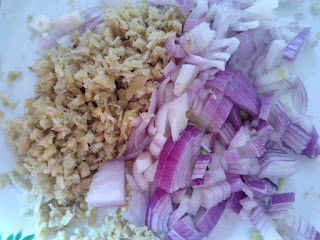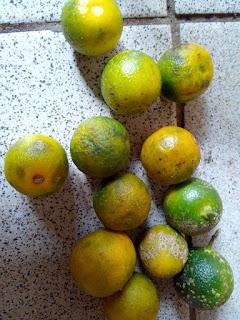1. East as often as three times, but it is healthier to eat twice a day. Eat nothing between meals as it is necessary for the stomach to rest.
2. The more simple the food the better it is for the stomach. Choose simple food and have either fruit or vegetable, never both at the same meal. Choose which are in season and produce in the country. The food should be gathered and prepared just before eating.
3. Fruits and vegetables should never be combined. always choose one or the other.
4. the first condition toward good health is to eat leisurely and masticate well. The question of disease or health is settled in the mouth and rests on mastication.
5. Do not drink while eating. Take liquids before or after the meal. Otherwise there will be trouble in digesting.
6. avoid salt as much as possible especially in raw foods because it causes rheumatism and injures the liver and kidneys. Never use vinegar because it is very injurious.
7. Never sweeten milk with sugar because it causes fermentation. If we wish the milk sweetened we should use honey.
8. Eat more or less of what is most valuable. The majority of persons become sick and die before their time because they continually put something in the stomach, loading it with too much food.
9. Be happy at the table and be thankful to God for all His mercies. Avoid excitement and anger and give the digestive organs an opportunity to function well.
10. Movement is the brother of digestion. If there is scarcity of movement for quite a while we suffer with indigestion and become diseased. If your work is intellectual, never work immediately after eating for it hinders the digestion, thus helping to bring on disease. Without movement we can have neither strength nor health.
Tuesday, September 13, 2016
Friday, April 15, 2016
Food: Facts – Of Bacon, Fatback and Salt Pork
- - Bacon is a cut from the side of a pig
- - Fatback is a cut from the back of a pig and is not salted or smoked.
- - Salt Pork is a cut from the belly and sides of the pig. It is fattier than the bacon, salt-cured but not smoked. Its saltiness varies; and in order to reduce the saltiness, parboil it before using. Salt pork if tightly wrapped and being kept in a refrigerator may have a food quality lifetime of up to 1 month.
Cooking: Tips - How to make a soup
- - Do not put salt into a soup until it is cooked and skimmed as the salt prevent the fat from rising.
- - Fresh parsley lessens the need for salt in soups.
- - Soup or stew can be more flavorful when onions are sautéed first in butter or oil before adding other ingredients.
- - When cooking milk or cream soups, cover the pan/cooking container in order to prevent caking or formation of a “skin”.
Cooking: Tips - What to do with very greasy pot of soup
-
When the pot of soup is too greasy, wrap some ice
cubes in a plastic bag or use cellophane of ice by dragging it slowly through
the surface of the warm soup. The oil will harden and stick to the bag. Wipe
the bag and repeat the process if necessary.
Cooking: Tips - What to do with very salty (oversalted) pot of soup
-
When the pot of soup is accidentally oversalted,
add 1 or two raw peeled potato/es to the soup and heat it for 5 minutes. The potato/es
will absorb some saltiness and can be removed after the 5 minutes heating.
Food: Tips - What to do with hardened or dehydrated cheese in the refrigerator
-
If the cheese is dehydrated of hardened inside
the refrigerator, you may grate or cut it in small pieces to be used in cooking or
grate it for topping.
Food: Tricks - How to remove nut shells when it got mixed with the nuts
If working with nuts and the nut shells were
mixed with the meats, put the whole mixture into a bowl of water. The shells will
float and you can scoop them out. If necessary, stir the thing so that the
shells underneath will float that you can scoop out again, repeat the same
process until there is no more shells to float. Drain the water and put the
nuts to dry before using them.
Food: Tips - Recycling Leftovers by Seasoning, Sautéing, Spicing and Hash
- - Ingredient can be cooked more quickly when it is diced, chopped or shredded in finer sizes.
- - Seasoning can be tasted and adjusted only after a minute or two after adding all the ingredients or after sautéing.
- - Leftovers are likely to be seasoned. For a change, vary the spices and herbs used for seasoning.
- - Leftovers can be sautéed with different cooking oils to create a new dish from the same ingredients. Consider using healthy oil available from the store.
- - Hash ingredients can be sautéed in clarified butter or fat skimmed from the used oil of a roast.
- - Hash food can be turned into a crusty “pancake” when puréed or thickened ingredients are added. The binding ingredients may include leftover mashed potatoes, puréed squash, bread crumbs soaked in milk, gravy, leftover oatmeal, egg beaten with milk, grated hard cheese, leftover stuffing thinned with small amount of milk or cream, etc.
Cooking: Tips - Hot Greased Griddle Test
Food: Facts - Eggs
- - An egg is approximately 1/3 yolk and 2/3 white.
- - The yolk of a large egg is about 1 tablespoon plus 1 teaspoon and the white is about 2 tablespoons.
- - White and brown eggs have no difference in their nutritional value.
- - An egg that has an odor, natural discoloration, or old crack may mean that it is destroyed and must be discarded.
Cooking: Tips & Tricks - Omelet
- - Use omelet pan or other pan that have low and sloping sides for easy stirring and turning.
- - For about 7 to 8 inches wide pan, use two eggs.
- - Preheat the pan with medium-high heat. While the temperature is still low, grease the pan with about ½ tablespoon of butter or oil and then cook the omelet.
- - Pour the mixed eggs into the heated pan, tilting it to make the eggs cover all the bottom of the pan. When the eggs begin to set lift it using a spatula to make the uncooked part runs underneath to be cooked, put back the omelet over the pan. Within about 1 minute the eggs should be cooked.
- - When cooked, turn the heat to low and add fillings. Gently, spread them all over the half of the eggs. Fillings that couldn’t cook instantly should be precooked and warm. Cheese filling must be grated and at room temperature.
- - When the fillings are cooked or warmed, use spatula and gently fold one-half of the omelet over the other half sandwiching the ingredients in between. Use the spatula again to lift the omelet and put it onto a plate for serving.
Tuesday, April 12, 2016
Food: Tricks - Of raw and hard-boiled eggs
- In order to peel hard-boiled eggs easier, add some salt to the boiling water while cooking the eggs.
- Prevent the white of the egg from seeping out from the shell during cooking by adding a teaspoon of salt or few drops of lemon juice or vinegar to the boiling water.
- To determine whether the egg is cooked/hard-boiled or not, you may spin it on its end. The cooked/hard-boiled egg will spin firmly while the fresh/uncooked egg wiggles following the force of the liquid materials within it.
- To test the egg for freshness, put the egg in a container of cold water. The fresher the egg the faster it will get to the bottom. If it floats on the water, it suggests that the egg is destroyed or rotten.
- Prevent the white of the egg from seeping out from the shell during cooking by adding a teaspoon of salt or few drops of lemon juice or vinegar to the boiling water.
- To determine whether the egg is cooked/hard-boiled or not, you may spin it on its end. The cooked/hard-boiled egg will spin firmly while the fresh/uncooked egg wiggles following the force of the liquid materials within it.
- To test the egg for freshness, put the egg in a container of cold water. The fresher the egg the faster it will get to the bottom. If it floats on the water, it suggests that the egg is destroyed or rotten.
Friday, February 26, 2016
Food: Meat - Chicken Feet Adobo (Adidas)
Chicken feet adobo is one of the delicacies of the Filipinos. It earned its popularity through the fact that it is truly palatable and sticky delicious.
Ingredients:
- 1 kl peeled chicken feet
- 50 ml soy sauce
- 1 teaspoon of ground black pepper
- 3 onions
Materials:
- chopping board
- knife
- cooking container
- ladle
Procedure:
- Wash the chicken feet thoroughly.
- Put the chicken feet into the cooking container and then pour over the soy sauce.
- Slice crosswise the onions, into thin onion rings, and then toss them into the cooking container.
- Sprinkle the black pepper powder over and mix them all well.
- Start cooking for about 30 to 45 minutes. Once in a while the food being cooked must be stirred.
- After 30 minutes, when the adobo is already tender, it is already cooked ready for serving. It is really better when overcooked though.

It can be taken as wine dish, snack, or eaten with rice during meal.
Friday, January 29, 2016
Food: Salad - Chicken ata-ata | Chicken breast salad
Ata means raw and fresh. This dish use the fresh meat (breast meat or pitso) of chicken for salad.
Ingredients:
- 1 Chicken breast (Use uncooked fresh pinikpikan chicken, do not use frozen dressed chicken, pinikpikan chicken is a chicken that is dressed with fire)
- 3 tablespoons of diced Ginger
- 3 tablespoons of diced Onion
- ground Black pepper
- Vinegar
- Calamansi or Lemon juice
- Salt
- Other spices (optional)
- Additional foods (optional, we will use Cucumber and Long Green Pepper in this preparation)
 |
| Sliced chicken (pinikpikan) breast |
 |
| Calamansi juice and Long Green Pepper |
 |
| Diced Ginger and Onion |
Materials:
- Bowl to contain the food
- Chopping board
- Knife
Procedure:
1. Slice the chicken breast into 1 inch by 1 cm sizes.
2. Use the bowl to soak the sliced meat in a vinegar for 40 minutes to 1 hour.
3. Drain the vinegar from the bowl.
4. Add all the other ingredients to the bowl of meat and mix well.
5. After mixing well, the food is ready to be served.
 |
| Chicken ata-ata salad with Cucumber and Long Green Pepper |
Subscribe to:
Posts (Atom)















